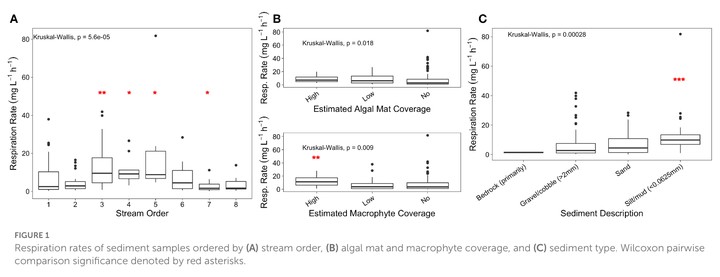Determining the biogeochemical transformations of organic matter composition in rivers using molecular signatures

Abstract
Inland waters are hotspots for biogeochemical activity, but the environmental and biological factors that govern the transformation of organic matter (OM) flowing through them are still poorly constrained. Here we evaluate data from a crowdsourced sampling campaign led by the Worldwide Hydrobiogeochemistry Observation Network for Dynamic River Systems (WHONDRS) consortium to investigate broad continental-scale trends in OM composition compared to localized events that influence biogeochemical transformations. Samples from two different OM compartments, sediments and surface water, were collected from 97 streams throughout the Northern Hemisphere and analyzed to identify differences in biogeochemical processes involved in OM transformations. By using dimensional reduction techniques, we identified that putative biogeochemical transformations and microbial respiration rates vary across sediment and surface water along river continua independent of latitude (18°N−68°N). In contrast, we reveal small- and large-scale patterns in OM composition related to local (sediment vs. water column) and reach (stream order, latitude) characteristics. These patterns lay the foundation to modeling the linkage between ecological processes and biogeochemical signals. We further showed how spatial, physical, and biogeochemical factors influence the reactivity of the two OM pools in local reaches yet find emergent broad-scale patterns between OM concentrations and stream order. OM processing will likely change as hydrologic flow regimes shift and vertical mixing occurs on different spatial and temporal scales. As our planet continues to warm and the timing and magnitude of surface and subsurface flows shift, understanding changes in OM cycling across hydrologic systems is critical, given the unknown broad-scale responses and consequences for riverine OM.